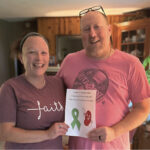“It does a body good…”
The 1-year well-child visit is typically when parents ask about the transition to cow’s milk. At this point, most children are getting the majority of their calories from table food. They typically have reduced the amount of formula or breast milk they are taking. Breastfeeding is encouraged for as long as mutually desirable by mother and baby. However, even breastfeeding mothers have usually considered the next step in terms of a milk source.
Transitioning to cow’s milk is not as straightforward as it used to be. At the grocery store, one may be faced with a dizzying array of what are termed, “health food milk alternatives.” These include soy milk, almond milk, rice milk and oat milk. In some cases, children with food allergies must utilize these products. However, I have many parents with a personal preference to avoid the use of traditional cow’s milk who inquire about alternate milk options.
Everyone knows that cow’s milk provides calcium. To be more precise, an 8-ounce glass of milk provides 300 milligrams of calcium. Calcium is important for bone health but also for teeth and muscles. It may play a role in maintaining blood pressure and body fat. Current recommendations are for toddlers (1 to 3 years old) to get 700 milligrams per day of calcium. A toddler taking two cups of milk, plus some yogurt or cheese, will easily meet this requirement. Of course, calcium is found in other food sources aside from cow’s milk—for example, broccoli and collard greens. However, a 1-year-old is unlikely to eat the three-plus cups of broccoli required to meet the daily recommended intake.
Cow’s milk is fortified with vitamin D. Vitamin D works with calcium to maintain bone health, but low vitamin D levels have also been linked to cancer, diabetes, asthma and depression. Toddlers should get 600 international units (IU’s) of vitamin D daily, so children keeping under the maximum recommended 24 ounces of milk daily will still need supplementation. However, recent studies demonstrate children consuming milk regularly are less likely to be vitamin D deficient.
As long as they are enriched products, soy, rice, oat and almond milk may have comparable calcium and vitamin D levels to cow’s milk. Brands vary significantly, so it is very important for parents to read product labels to be sure the amount of calcium and vitamin D is adequate.
The major area where health milk alternatives fall short is in protein content. An 8-ounce glass of milk provides 8 grams of protein. Almond and rice milk typically provide only 1 gram of protein per 8-ounce serving. Oat milk usually has 4 grams of protein per cup. Soy milk comes closest to cow’s milk and usually provides 7 grams of protein per cup.
The American Academy of Pediatrics recommends two 1-ounce servings from the protein group daily for toddlers. This is about the volume of one-half an egg or 2 tablespoons of ground meat. This protein recommendation is in addition to the 2 to 3 daily servings of dairy recommended. Thus, use of an alternate milk source may leave a toddler’s diet poor in protein, especially a picky toddler who is not consistently consuming recommended amounts of protein.
My general advice for parents considering an alternate milk option is to do their research and read product labels. A product labeled “healthy” or “organic” or sold in a health food store is not automatically appropriate for children. Many “health milk” alternatives are marketed as being lower in fat and calories than cow’s milk. Though this may be appealing for adults, it is rare that I restrict calories in a 1-year-old.
Soy milk, in particular, has been used extensively as a cow’s milk alternative. Many enriched soy milk brands are available with nutritional profiles comparable to cow’s milk.
Parents often inquire about “health milk” alternatives as they clearly want to make the best choices for their children among an ever-expanding number of milk options. It may be that, down the line, additional product development will make some of these health milk alternatives more appropriate for younger children, but, at this time, many of them are not ideal for toddlers weaning off formula and breast milk. Milk “does a body good,” but can only do so for our little one’s bodies if it has the necessary vitamins and minerals to best support their continued growth and development.
Dr. Deepa Sekhar is a pediatrician at the Milton S. Hershey Medical Center.





